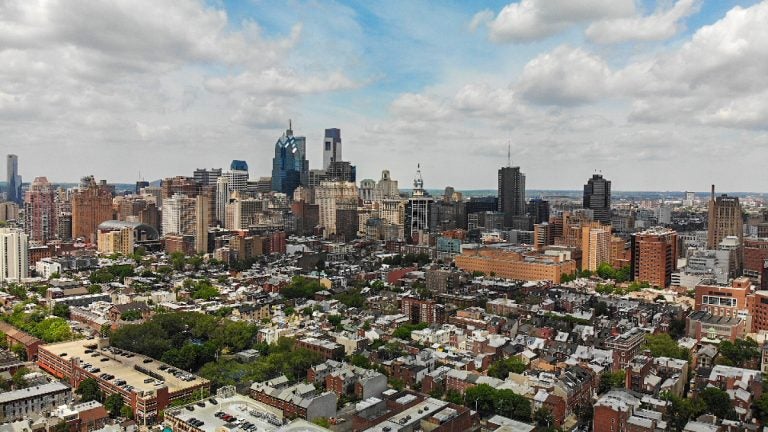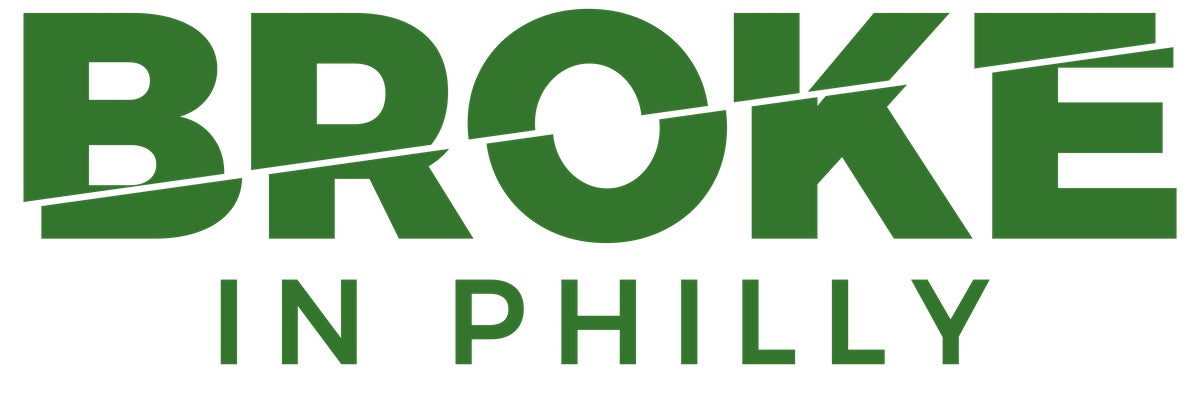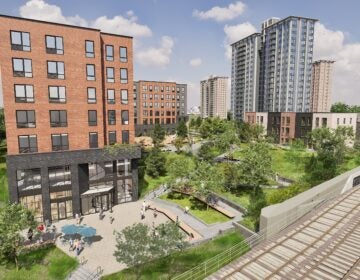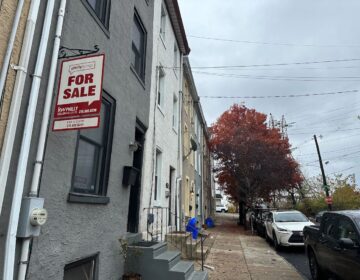Why aren’t we talking about these other Philly real estate tax abatements?
Philadelphians know about the controversial 10-year tax abatement, here are five other real estate abatement programs that assist over 200K homeowners in the city.

The Philadelphia skyline is pictured in a file photo. (Danya Henninger/Billy Penn)
City Council got something really right and surprisingly, no one seems to have noticed, least of all most members of City Council.
With all the debate over the 10-year tax abatement for new construction and renovations, no one is talking about the five other tax abatement programs that have been enacted and expanded to assist over 220,000 existing homeowners. In some cases, these programs completely eliminate their real estate tax bills for as long as they live in their homes.
The 10-year real estate tax abatement for new construction and renovations was one of the hottest topics of the primary election season this past spring, with no less than four separate bills introduced by City Council members to reduce or eliminate this incentive program.
However, the “fairness” complaint that many objectors raised is baseless, as the City dedicates over twice the revenue to the other five tax abatement programs, abating over $156 million a year according to analysis of city data, and making payment arrangements for another $86 million, versus about $93 million in FY 2017 for the construction and renovation abatement. And, as the 10-year abatement expires on these properties, Mayor Jim Kenney has included in the city’s budget that the new real estate tax revenue from those properties will go to the Affordable Housing Trust Fund.
These other five programs are currently used by over 220,000 existing homeowners. That’s why the Federal Reserve Bank found that Philadelphia has done a great job of ensuring that existing homeowners are not displaced when long-desired new construction comes to neighborhoods that have been battling blight, vacancy, and disinvestment for decades.
The five real estate tax abatements available to existing homeowners are:
- The Homestead Exemption
- Longtime Owner Occupant Program (LOOP)
- Owner-Occupied Real Estate Tax Payment Agreement (OOPA)
- Senior Tax Freeze
- Active Duty Exemption
Most popular: The Homestead Exemption
The largest of the relief programs, the Homestead Exemption, given to over 200,000 homeowners, has increased the amount each homeowner can claim by 50% over the past two years. All homeowners, unless they are receiving the 10-year abatement or LOOP, are eligible for this tax relief, which waives the first $45,000 of home value, every year for as long as the homeowner lives there. In poorer neighborhoods, where many homes are valued as low as $50,000, this eliminates all or most of the homeowner’s tax bill.
However, over 20% of eligible homeowners have not applied to receive this tax relief, which can be applied for online or on a smartphone, in about two minutes. Better outreach needs to be done to assure that all eligible homeowners receive this relief.
LOOP cushions low-income owners from rising tax bills
LOOP is used by more properties than use the new construction and renovation abatement. This program was introduced directly in response to the reassessments of AVI in 2014, to cushion low-income homeowners from drastic increases to their real estate tax bills. This is perhaps the most complex of the five programs to understand, and it is likely that many households eligible for this tax relief are not aware they qualify.
Homeowners can make alternate payment plans based on income
OOPA does not reduce what is owed in taxes, but defers payments based on the household income, in some cases, waiving all current year tax payments. Deferred tax payments are not recaptured until the property is sold, and OOPA household tax bills can also be lowered by the other tax abatement programs.
A policy that freezes taxes for seniors, exemptions for service members
The Senior Tax Freeze is used by almost as many homeowners as is LOOP, but unlike LOOP, this tax freeze does not sunset after 10 years. This is an especially important program, given the high number of seniors who own homes and are on low, fixed incomes. These households are also eligible to receive the Homestead Exemption, helping many to pay little or no annual real estate taxes.
Meanwhile, the Active Duty Exemption, for service members who are stationed outside of Pennsylvania, is only claimed by a handful of homeowners.
Our home-grown model for promoting equitable growth
These five programs are a wise investment in preserving homeownership and stabilizing neighborhoods citywide. Together with the 10-year construction and renovation abatement, these accompanying tax relief programs are viewed by other cities as a benchmark for how to promote growth while preserving existing homeownership. Atlanta just enacted a tax relief program for existing homeowners that they explicitly describe as modeled on the successful tax relief programs in Philadelphia.
When compared with other major cities in the United States, Philadelphia’s construction boom is practically anemic, bringing only a few thousand new units a year, while cities like Houston, Phoenix, and Seattle add tens of thousands of new units each year. We still need the incentive of the 10-year construction and renovation abatement to continue to bring new housing units and to renovate our aged housing, office and hotel stock, and we need to continue the tax relief for existing homeowners.
City Hall needs to do a better job of informing neighborhood residents of these other tax relief programs. They have succeeded in preserving homeownership so City Council and the administration should be applauded for this.
 WHYY is one of 19 news organizations producing Broke in Philly, a collaborative reporting project on solutions to poverty and the city’s push towards economic justice. Follow us at @BrokeInPhilly
WHYY is one of 19 news organizations producing Broke in Philly, a collaborative reporting project on solutions to poverty and the city’s push towards economic justice. Follow us at @BrokeInPhilly
WHYY is your source for fact-based, in-depth journalism and information. As a nonprofit organization, we rely on financial support from readers like you. Please give today.








